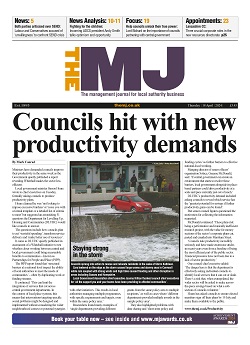Next week will mark six months since the Government announced its intention to take a new approach to devolution in England through ‘County Deals’.
With the intervening period resulting in multiple delays to the Levelling Up White Paper, there has been no end of column inches written on what levelling up means in practice, and indeed, how County Deals should be rolled out.
At the County Councils Network (CCN) we have focused our energies on engaging with Government, sector stakeholders, and most importantly, our member councils, in putting forward a positive proposition on how County Deals can be made a reality.
Last month, we published the first major analysis of County Deals with Grant Thornton. This is now followed today by a new insight paper in collaboration with the Institute for Government (IfG), How to make a success of county devolution deals.
Built on a roundtable discussion with local leaders, national stakeholders, and experts on devolution, alongside drawing on IfG’s deep understanding of the mechanics of Whitehall, this paper explores the evolving landscape of county deals and the key opportunities and challenges facing the roll out of a renewed devolution drive.
One of the key conclusions of the report is that the forthcoming White Paper must include a devolution framework. Crucially, this framework should build on, and embed, the County Deals ‘principles’ set out by Government earlier this year.
It was clear from the roundtable that these principles have marked a distinct departure from previous approaches to devolution outside our major cities, one that has provided the right foundations to move forward a devolution agenda more suited to the complex geographic and institutional landscape of non-metropolitan England.
With the principles clearly defining devolution in terms of county geographies, this has allowed local partners to focus their discussions on how they can come together around a shared geography based on economic scale and real local identity, rather than protracted debates on what constitutes a ‘functional economic area’.
Moreover, by taking a more flexible approach to Governance, the principles have placed an emphasis on alternatives to the combined authority model; enabling existing strategic authorities to be accountable bodies for devolved powers. This recognises the need to harness the key role of county and unitary authorities in place-based growth and public service delivery, while avoiding the imposition of an unnecessary tier of local government.
But despite these positive steps forward, IfG conclude that a devolution framework needs to go further, articulating clearly the devolved powers on offer and governance changes required to access them. Equally, it requires strong departmental leadership and buy in across Whitehall, particularly the Treasury.
In this regard, IfG lay down an important challenge to counties in convincing Ministers across Government on what constitutes ‘strong local leadership’ which is able to access the most comprehensive devolved powers to support the levelling up agenda.
That’s why CCN recently commissioned Grant Thornton to analyse the powers and funding county authorities should be seeking as part of their proposals, while independently assessing the critical success factors of different models of governance models.
Grant Thornton’s evaluation showed that across the majority of geographical options analysed, the existing Leader and Cabinet model at the upper-tier level is the most suitable and readily deliverable model to achieve strong local leadership. It offers a robust governance model, able to exercise powers on the scale currently afforded to metro-mayors, while setting a strategic vision with local identity, and bringing partners together around a shared economic agenda.
Crucially, it overcomes the political and operational challenges of adopting a new model of executive leadership through a directly elected leader of a county or unitary authority.
While recognising this model is far more suitable than a mayoral combined authority in counties, it remains an untested model of governance compared to the Leader and Cabinet model. Moreover, despite some gains in direct electoral mandate, there is little evidence currently to suggest it would result in more stable and accountable local leadership or be more effective at bringing partners together to deliver a County Deal.
With the White Paper on the horizon, the time for speculating on the Government’s preferred model will soon be over. Whatever the outcome, an ambitious, clear, yet flexible devolution framework that embeds this new approach to devolution can enable counties to bring forward proposals capable of driving the economic recovery and supporting levelling up across all four corners of England.
James Maker, Head of Policy & Communications, County Councils Network


